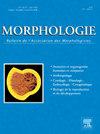12mm wide parietal foramina: Morphological aspects and forensic application–A case report
Q3 Medicine
引用次数: 0
Abstract
The enlarged parietal foramina (EPF) consist of a rare anatomical variation resulting from an autosomal dominant mutation, typically measuring over 5 mm. Although often asymptomatic, this condition can be relevant in forensic anthropology for both human identification and differential diagnosis. This case report describes the presence of bilateral EPF in the skull of an adult male discovered in an advanced state of decomposition in Central-Western Brazil. Each foramen measured approximately 12 mm and was detected during routine anthropological analysis. Potentially mimicking old gunshot wounds (especially when unilateral), the EPF was identified by its blunt margins, bilateral distribution in the parietal bone, and lack of macroscopically visible firearm residue and radiating fractures. This case underscores the importance of recognizing rare anatomical variants to avoid misinterpretation during medicolegal evaluations. When available, antemortem records may support its use as an identifying feature. The EPF remains an underreported condition, particularly in forensic settings, warranting further attention.
12mm宽顶骨孔:形态学和法医应用——一例报告
增大的顶孔(EPF)由常染色体显性突变引起的罕见解剖变异组成,通常测量超过5毫米。虽然通常无症状,但这种情况在法医人类学中可以用于人类识别和鉴别诊断。本病例报告描述了在巴西中西部发现的一名成年男性颅骨中发现的双侧EPF的存在。每个孔约为12毫米,在常规人类学分析中检测到。EPF可能模仿了旧的枪伤(特别是单侧),通过其钝缘,双侧顶骨分布,以及缺乏肉眼可见的火器残留物和辐射性骨折来确定。这个案例强调了识别罕见解剖变异的重要性,以避免在法医评估中误解。如果可用,生前记录可能支持将其用作识别特征。EPF仍然是一种报告不足的情况,特别是在法医环境中,需要进一步注意。
本文章由计算机程序翻译,如有差异,请以英文原文为准。
求助全文
约1分钟内获得全文
求助全文
来源期刊

Morphologie
Medicine-Anatomy
CiteScore
2.30
自引率
0.00%
发文量
150
审稿时长
25 days
期刊介绍:
Morphologie est une revue universitaire avec une ouverture médicale qui sa adresse aux enseignants, aux étudiants, aux chercheurs et aux cliniciens en anatomie et en morphologie. Vous y trouverez les développements les plus actuels de votre spécialité, en France comme a international. Le objectif de Morphologie est d?offrir des lectures privilégiées sous forme de revues générales, d?articles originaux, de mises au point didactiques et de revues de la littérature, qui permettront notamment aux enseignants de optimiser leurs cours et aux spécialistes d?enrichir leurs connaissances.
 求助内容:
求助内容: 应助结果提醒方式:
应助结果提醒方式:


